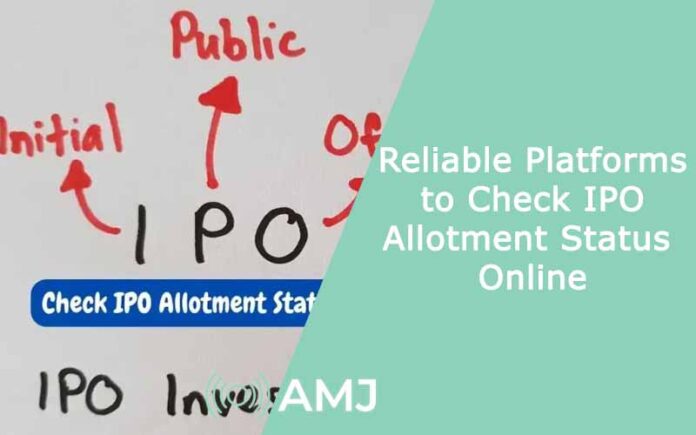Investing in Initial Public Offerings (IPOs) has become an attractive option for many investors looking to capitalise on the potential growth of new companies entering the stock market. The excitement of participating in an IPO often culminates when investors find out whether they have been allotted shares. This process, known as IPO allotment, determines which applicants receive shares based on the company’s subscription levels and allocation criteria. Successfully securing an allotment can be a significant milestone for investors, potentially leading to substantial returns.
Understanding how to check IPO allotment status is crucial for investors eager to know the outcome. Various online platforms provide quick and easy access to allotment status, allowing investors to stay informed about their investment results. This article explores the top platforms where investors can check their IPO allotment status online, ensuring they are well-equipped to track their applications efficiently.
Contents
1. Stock Exchange Websites
One of the most reliable sources for checking IPO allotment status is the official websites of stock exchanges, like the National Stock Exchange or, in short, NSE or the Bombay Stock Exchange (BSE). These platforms provide updated and accurate information regarding allotments. To check the status, investors typically need their application number, PAN number, or DP ID/client ID. The user-friendly interfaces of these websites make it straightforward for investors to access their allotment information.
2. Registrar Websites
IPO registrars, the entities responsible for processing IPO applications and allotments, often have dedicated websites where investors can check their status. For those wondering how to check IPO allotment status, investors can quickly find out if they have been allotted shares by entering relevant details such as the application number, PAN, or DP ID/client ID. These platforms are reliable and frequently updated, ensuring investors receive timely information. Additionally, they often provide detailed instructions and customer support to assist investors throughout the process.
3. Bank and Broker Websites
Many banks and brokerage firms offer their clients the ability to check allotment status through their online portals. Investors can see where their initial public offering (IPO) applications stand by logging into their accounts with the relevant bank or broker. These platforms integrate with the registrar’s databases to provide accurate information. This method is convenient for investors who prefer to manage their investments through their bank or brokerage accounts. Additionally, these portals often offer other valuable tools and resources to help investors manage and track their portfolios effectively.
4. Mobile Applications
With the rise of mobile technology, several financial apps now provide status-checking features. Apps like those offered by brokerage firms or dedicated tracking apps allow investors to check the status. Moreover, these apps often offer push notifications to alert investors when the results are available, making the process even more convenient. The ease of use and accessibility of mobile applications make them popular among tech-savvy investors.
5. Online Forums and Financial News Websites
While not as direct as the other methods, online forums and financial news websites can also provide information on IPO status. These platforms often share updates and links to official sources where investors can check their allotment. While relying solely on these sources might not be advisable, they can be helpful for investors seeking additional information and community insights. Moreover, engaging in these forums can provide a sense of community and shared experiences among investors.
Understanding how to check IPO allotment status is essential for investors eagerly awaiting the results of their IPO applications. Every platform has its benefits, so investors may choose which works best for them. Staying updated on IPO allotments helps investors make timely decisions and manage their portfolios effectively, ensuring a smoother investment experience.












![Index of Money Heist [Season 1, 2, 3 & 4 – All Episodes, Cast and Plot] Index of Money Heist](https://www.asiamediajournal.com/wp-content/uploads/2021/05/Index-of-Money-Heist-3-100x70.jpg)